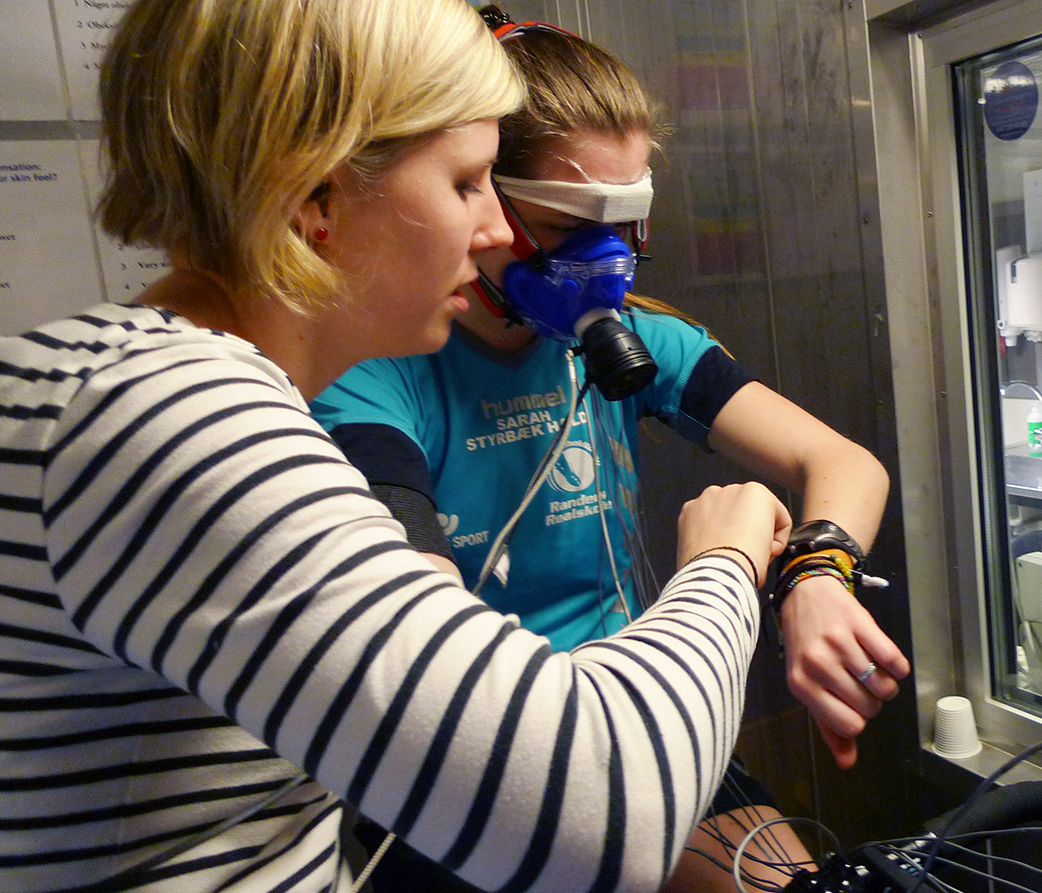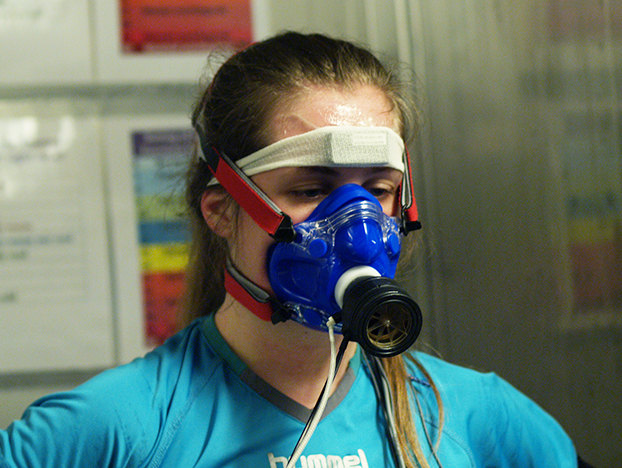Focus on thermal environment, climate and health
The aerosol and climate laboratory has chambers which are able to simulate environments with temperatures from -25 °C to +50 °C and humidity from 20% to 80%. Among other things, students and researchers use the climate lab to test how different materials and products work in heat and cold. The chambers also provide the opportunity to study our bodies’ reactions, capacities and limitations in different climates. Studies are often performed with test participants, some tests and measurements, however, are better accomplished with one of the lab’s many thermal manikins.
The lab has the equipment and expertise to study how the human body reacts to its environment in thermal physiological studies. Physical labour can be simulated and monitored with a bicycle ergometer or a treadmill. The lab has measuring equipment for thermal physiological studies and thermal environment evaluation such as:
- measuring devices for heart rate, oxygen uptake, body core and skin temperatures,
- measuring devices for air temperature, humidity, air velocity, radiant temperature, Wet Bulb Globe Temperature (WBGT)
- web and smartphone based heat and cold stress and thermal comfort assessment and earning tools such as Required Clothing Insulation (IREQ), Pulse Hight Spectrum (PHS), Predicted mean Vote (PMV), ClimApp

Thermal manikins
Several types of thermal maniniks (models of human bodies) are used in the climate lab – including two full body manikins, one baby manikin, one hand, one foot and one head.
The thermal manikins are used to measure thermal insulation and water vapor resistance of clothing and sleeping bags. The manikins are often used in product development in collaboration with manufacturers.
The smaller manikins are used for more detailed studies of thermal characteristics of products. For instance, the baby manikin has been used to study the thermal environment in neonatal incubators, and the hand manikin can be used in testing of thermal insulation and contact resistance of gloves.

